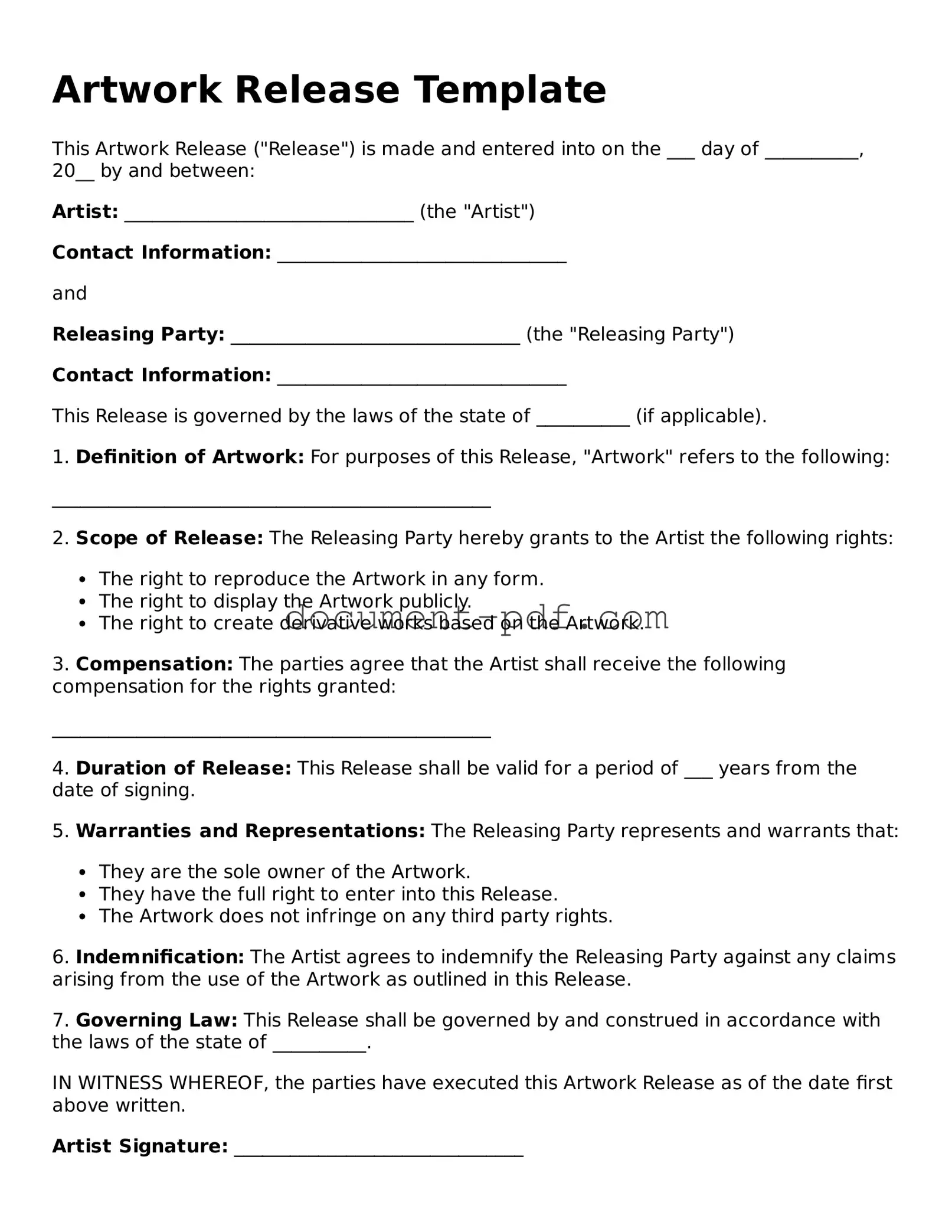Artwork Release Template
This Artwork Release ("Release") is made and entered into on the ___ day of __________, 20__ by and between:
Artist: _______________________________ (the "Artist")
Contact Information: _______________________________
and
Releasing Party: _______________________________ (the "Releasing Party")
Contact Information: _______________________________
This Release is governed by the laws of the state of __________ (if applicable).
1. Definition of Artwork: For purposes of this Release, "Artwork" refers to the following:
_______________________________________________
2. Scope of Release: The Releasing Party hereby grants to the Artist the following rights:
- The right to reproduce the Artwork in any form.
- The right to display the Artwork publicly.
- The right to create derivative works based on the Artwork.
3. Compensation: The parties agree that the Artist shall receive the following compensation for the rights granted:
_______________________________________________
4. Duration of Release: This Release shall be valid for a period of ___ years from the date of signing.
5. Warranties and Representations: The Releasing Party represents and warrants that:
- They are the sole owner of the Artwork.
- They have the full right to enter into this Release.
- The Artwork does not infringe on any third party rights.
6. Indemnification: The Artist agrees to indemnify the Releasing Party against any claims arising from the use of the Artwork as outlined in this Release.
7. Governing Law: This Release shall be governed by and construed in accordance with the laws of the state of __________.
IN WITNESS WHEREOF, the parties have executed this Artwork Release as of the date first above written.
Artist Signature: _______________________________
Date: ___________________
Releasing Party Signature: _______________________________
Date: ___________________
